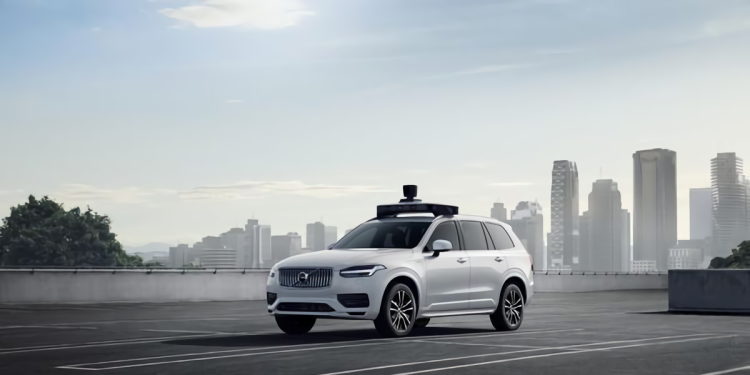Watch all the Transform 2020 sessions on-demand here.
Just over a month after Uber received a California Department of Motor Vehicles (DMV) license to test driverless cars on public roads, the company has resumed autonomous testing in San Francisco. Uber says it will limit its time on the road to a “few weeks” while it completes a codebase and infrastructure update and that two of its Volvo XC90 prototypes will be deployed initially, each with a pair of safety drivers in the front seats. Previously, Uber was manually testing up to eight cars in San Francisco with safety drivers and copilots.
The testing will no doubt be closely watched by industry observers, as it marks Uber’s return to autonomous driving in California years after the company postponed further tests following a fatal accident. In March 2018, one of Uber’s cars struck and killed a pedestrian while driving in autonomous mode, prompting a firestorm of criticism from legislators, regulators, and the public.
Starting today, Uber’s cars will drive on San Francisco routes at posted speed limits only during daylight hours. Importantly, they won’t pick up passengers because Uber’s license is different from the California Public Utilities Commission (CPUC) permit companies must obtain to transport passengers in autonomous vehicles. Only six companies — GM’s Cruise, Aurora, AutoX, Pony.ai, Waymo, and Zoox — have permits under the CPUC’s pilot program, with Zoox the first to receive one in December 2018.
“We are excited to resume autonomous testing in Uber’s home city this week,” said an Uber spokesperson. “Our testing area will be limited in scope to start, but we look forward to scaling up our efforts in the months ahead and learning from the difficult but informative road conditions that the Bay Area has to offer.”
June 5th: The AI Audit in NYC
Join us next week in NYC to engage with top executive leaders, delving into strategies for auditing AI models to ensure fairness, optimal performance, and ethical compliance across diverse organizations. Secure your attendance for this exclusive invite-only event.
San Francisco joins Pittsburgh on the small list of places where Uber is autonomously testing its cars — safety drivers and copilots operate the company’s fleets manually in Dallas and Toronto and in Washington, D.C. In Dallas and Toronto, Uber says “no more than two” of its cars are out on the road during daylight hours. In Washington, D.C., Uber says up to four vehicles are being tested during the day.
Uber recently noted that its Advanced Technologies Group (ATG), which is responsible for its self-driving car R&D, has grown to a 1,000-person workforce spread across offices in San Francisco, Toronto, Pittsburgh, and elsewhere. Furthermore, it estimates it has collected data from “millions” of autonomous vehicle testing miles to date and completed “tens of thousands” of passenger trips.
But Uber has a mixed track record when it comes to self-driving car research. Following the accident in Tempe, Arizona, it restarted tests in Pittsburgh with a small fleet that now numbers around 20 cars. The National Transportation Safety Board later determined that Uber had disabled the automatic emergency braking system in the Volvo XC90 involved in the crash.
Uber says it has taken a number of steps to improve its safety programs in the years since the crash.
The company raised the technical competency required for operator roles and added commercial driver’s license-level medical fitness requirements. Now, operators are limited to four hours behind the wheel in a workday and two hours without taking a break or switching positions, and they’re subject to monitoring by a camera system that detects when they might be distracted and sounds an audible alert before sending a notification to a remote monitoring team for review.
On the technical side, Uber implemented modifications to improve detection and tracking of pedestrians and cyclists and to enable simultaneous operation of cars’ emergency braking systems with its self-driving technology. It also established an independent panel charged with suggesting changes to its self-driving program and operational safety and systems engineering and testing teams.


